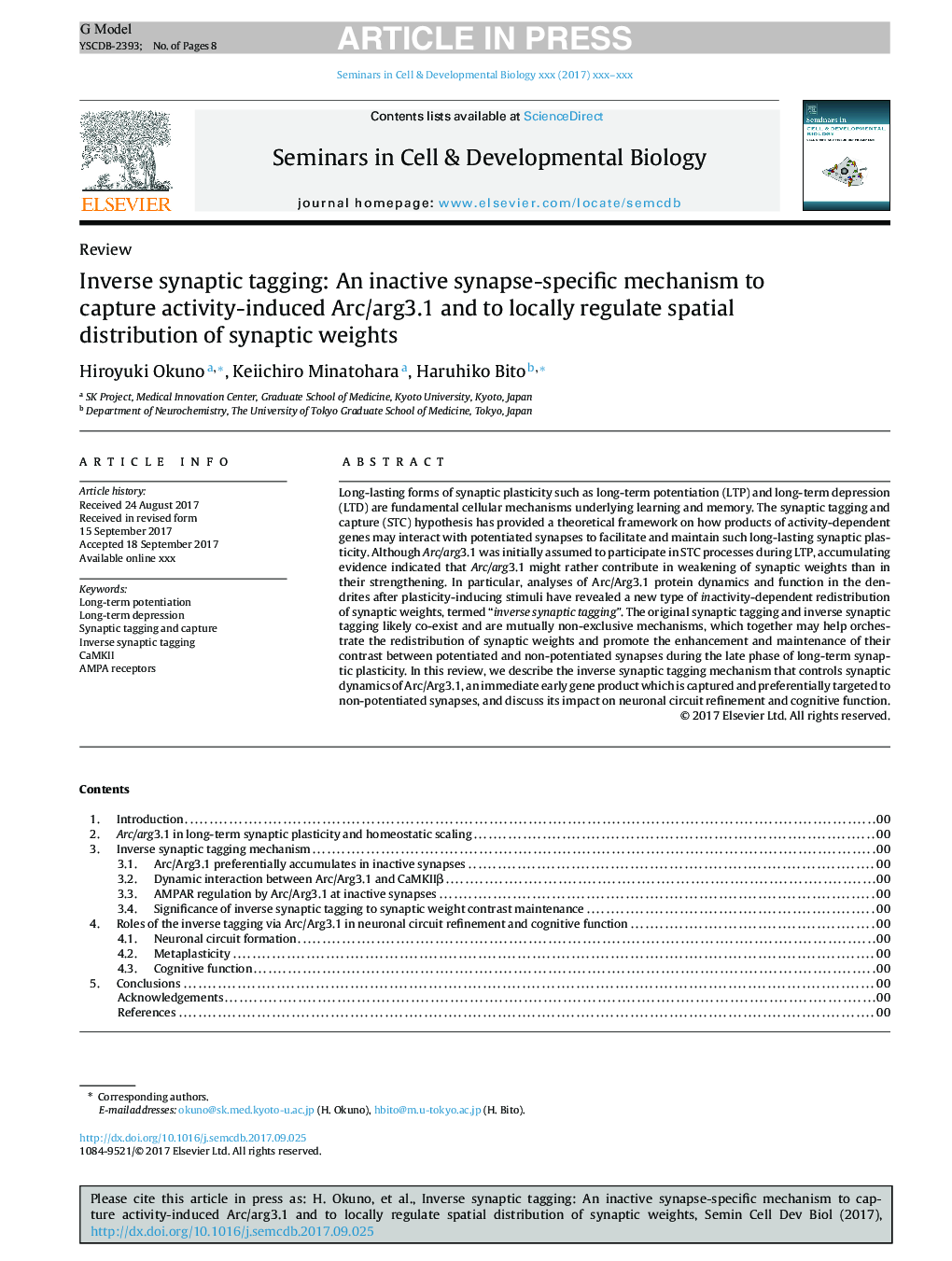| Article ID | Journal | Published Year | Pages | File Type |
|---|---|---|---|---|
| 8479672 | Seminars in Cell & Developmental Biology | 2018 | 8 Pages |
Abstract
Long-lasting forms of synaptic plasticity such as long-term potentiation (LTP) and long-term depression (LTD) are fundamental cellular mechanisms underlying learning and memory. The synaptic tagging and capture (STC) hypothesis has provided a theoretical framework on how products of activity-dependent genes may interact with potentiated synapses to facilitate and maintain such long-lasting synaptic plasticity. Although Arc/arg3.1 was initially assumed to participate in STC processes during LTP, accumulating evidence indicated that Arc/arg3.1 might rather contribute in weakening of synaptic weights than in their strengthening. In particular, analyses of Arc/Arg3.1 protein dynamics and function in the dendrites after plasticity-inducing stimuli have revealed a new type of inactivity-dependent redistribution of synaptic weights, termed “inverse synaptic tagging”. The original synaptic tagging and inverse synaptic tagging likely co-exist and are mutually non-exclusive mechanisms, which together may help orchestrate the redistribution of synaptic weights and promote the enhancement and maintenance of their contrast between potentiated and non-potentiated synapses during the late phase of long-term synaptic plasticity. In this review, we describe the inverse synaptic tagging mechanism that controls synaptic dynamics of Arc/Arg3.1, an immediate early gene product which is captured and preferentially targeted to non-potentiated synapses, and discuss its impact on neuronal circuit refinement and cognitive function.
Related Topics
Life Sciences
Biochemistry, Genetics and Molecular Biology
Cell Biology
Authors
Hiroyuki Okuno, Keiichiro Minatohara, Haruhiko Bito,
